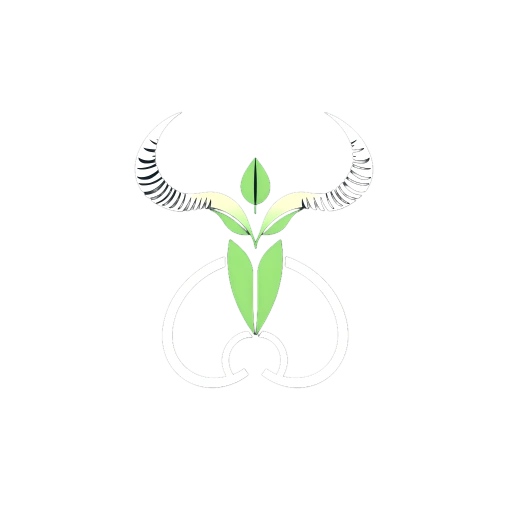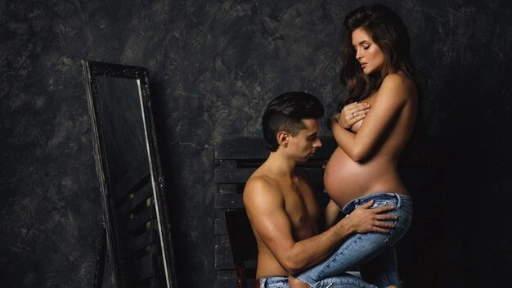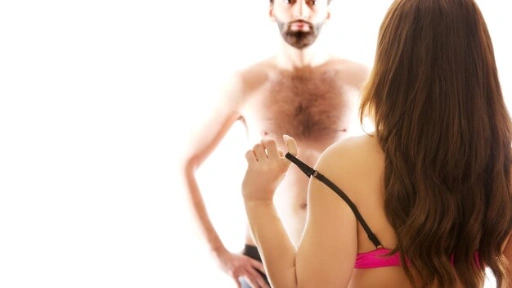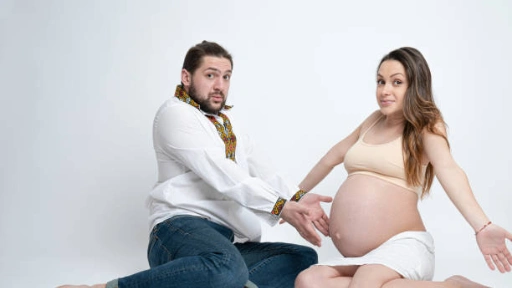When Erin first reached out to me, her email was short but loaded with a kind of intellectual curiosity that I have come to recognize as a precursor to transformation. She wrote about subtle but undeniable shifts in her behavior since giving birth six months ago: an urge to dress more boldly, to flirt, to reclaim her body not as a maternal vessel but as an expressive force of desire. Her husband, Adam, had noticed too. What once would have provoked conflict—her playful comments to male friends, the visible pleasure she took in public attention—now intrigued him more than it alarmed him. There was discomfort, yes. But there was also arousal. And confusion. Was this postpartum energy a phase? A hormonal glitch? Or was something deeper unfolding?
This is the kind of question I live for—not because I seek to upend marriages, but because I believe the most meaningful evolutions often begin with these whispered, private recognitions: I am changing. We are changing. Now what?
As a clinical researcher and therapist specializing in cuckold dynamics, I know that postpartum shifts are not just hormonal—they’re existential. Pregnancy doesn’t just change a woman’s body. It rearranges her psyche, her place in society, and often, her relationship to power and desire. For couples like Erin and Adam, these changes can illuminate long-buried dynamics. In their case, it opened the door to something unexpected but remarkably authentic.
When Motherhood Sparks Power
Erin and Adam—both in their mid-thirties, married for seven years—were the quintessential high-functioning couple: professional, respectful, and largely conflict-averse. Adam, a software engineer with a methodical mind and gentle demeanor, had always admired Erin’s intelligence and wit. Erin, a creative director with a background in fashion and branding, had long been admired for her confidence, but even she admitted it had dulled in the wake of marriage and routine.
The pregnancy, she explained to me in our first video session, had reawakened something elemental. She used the word “sovereignty,” a term more commonly reserved for political theory than maternal introspection, but in this context, it was perfect. “I felt like I had created life with my body. And now I want to own that body again. Not just as a mother, but as a woman. A powerful woman.”
This isn’t unusual. Research in evolutionary psychology has shown that pregnancy and childbirth can heighten a woman’s self-concept—particularly if she experiences childbirth as a physically empowering event. Postpartum hormonal shifts, especially those involving oxytocin and prolactin, initially foster deep maternal bonding but can also lead to increased social openness and emotional intensity. In modern contexts, this can translate into a reclaimed sexual identity. When these biological impulses meet the freedoms of modern womanhood, they often manifest as assertiveness, sexual curiosity, and, in some cases, dominance.
But Erin wasn’t just interested in reclaiming her sensuality. She wanted to understand why Adam wasn’t reacting the way she expected.
“He watches me,” she said. “When I flirt, when I tease, when I show cleavage on a walk. He notices. And he gets quiet. But not in a bad way. It’s almost like… he likes it. Or at least, he’s drawn to it.”
This, too, was familiar. In many men, particularly those with high relational intelligence and less rigid ego structures, a partner’s post-pregnancy transformation can trigger not jealousy—but arousal. Often confused at first with anxiety, this arousal has deep evolutionary roots.
The Unspoken Turn
Adam’s response had the tentative quality of someone watching an iceberg shift from beneath. In our private sessions, he admitted feeling a mixture of reverence and erotic fear toward Erin since the birth of their son.
“She’s different,” he told me. “She’s stronger. It’s like she doesn’t need me in the same way. And that’s unsettling. But… also, I’ve never wanted her more.”
What Adam was experiencing is known in psychology as submissive attraction: a paradoxical desire that arises when a partner’s independence, strength, or social allure triggers arousal instead of threat. Unlike traditional masculinity scripts that emphasize control, many men today find erotic charge in yielding. Especially when the relationship’s emotional core remains secure, this yielding can evolve into a preference for dominance-submission dynamics.
In cuckold couples, this energy is often channeled into consensual non-monogamy—but it doesn’t always start there. It usually begins, as it did for Erin and Adam, with something more ambient: a shift in tone, glances that linger longer, a comment made boldly at a dinner party. These are the brushstrokes of transformation—not the dynamic itself, but the invitation to explore it.
Hormones, Psychology, and Hidden Pathways
Let’s pause for a moment to zoom out—because while Erin and Adam’s story feels personal and idiosyncratic, it’s actually part of a larger physiological and psychological architecture.
Evolutionary theory tells us that male investment in offspring (a relatively rare trait across species) is heavily tied to paternity assurance. But in modern humans, that assurance is not always about control. It’s often negotiated emotionally—through loyalty, trust, and social validation.
Postpartum shifts in female sexuality can test this. A mother asserting sexual agency threatens traditional investment models, but in some men, especially those with low reactive aggression and high empathy, it instead evokes compersion—a term from polyamory meaning “pleasure in a partner’s pleasure.” For such men, watching a partner’s sexual autonomy unfold can be both challenging and deeply erotic.
There’s a neurochemical basis for this. Testosterone, the so-called “dominance hormone,” is not the enemy of submission—in fact, lower testosterone levels in men often correlate with higher pair bonding, reduced aggression, and greater responsiveness to a partner’s emotional cues. Meanwhile, dopamine spikes associated with risk and novelty can make the prospect of erotic submission particularly thrilling. The result is a confusing emotional brew: jealousy layered with arousal, anxiety intertwined with desire.
It was exactly this complexity that Adam was navigating. He didn’t want to lose Erin. But the idea of her being desired—of her choosing to exercise that power—stirred something ancient and intimate within him.
Testing the Waters
I suggested they begin with a series of “flirtation experiments.” These weren’t about immediate action—they were about observation. Could Erin flirt at a café, while Adam watched from a distance? Could she initiate a text exchange with a former classmate, with Adam included in the loop? Could she share stories of past fantasies, framed as recollections rather than intentions?
These experiments served two purposes. First, they helped Erin explore the contours of her evolving sexual identity without guilt or defensiveness. Second, they allowed Adam to metabolize his reactions slowly, outside of crisis. There was no threat, only theatre. No betrayal, only performance.
In evolutionary terms, this approach mimics the “probing behaviors” seen in primate pair bonding—low-risk, non-committal tests of social and sexual boundaries. For humans, it functions as an emotional warm-up, allowing couples to build new scripts around trust and power.
Adam’s reaction surprised them both.
“I liked watching her,” he told me. “Not just because she was sexy, but because she looked… alive. I felt proud. Protective. Aroused. It was all mixed together.”
This mix is crucial. In cuckold dynamics, it’s not just about humiliation or voyeurism. It’s about emotional recalibration. The submissive partner must feel secure enough to allow arousal to eclipse anxiety. The dominant partner must feel empowered, not burdened, by their new role.
The Role Reversal Begins
Six weeks later, Erin kissed another man in front of Adam for the first time. It wasn’t planned. It happened at a dinner party—an old friend, a lingering moment, and then her eyes turned to Adam, asking permission without words. He nodded.
“I thought I’d be angry,” he later confessed. “But I wasn’t. I was hard. I was grateful. And I was hers.”
This was the moment their dynamic truly shifted. Not just in behavior, but in belief. Erin wasn’t just Adam’s wife—she was now a woman who could choose to be with others and still choose to come home. And Adam wasn’t just a husband—he was a witness, a supporter, a worshipper.
We built new rituals around this moment. Erin would recount her experiences in detail—never rushed, never performative. Adam learned to listen without interruption, his arousal becoming an offering, his submission a form of presence.
Contrary to stereotype, this didn’t make Adam passive. In fact, it sharpened his attentiveness. He became more affectionate, more eager to please. Erin, meanwhile, flourished in her authority—not as a tyrant, but as a woman free to explore without fear of abandonment.
From Jealousy to Reverence
The most striking change came in how they talked to one another. Their communication, once polite but surface-level, now dripped with emotional honesty. Adam admitted fears he’d never spoken aloud. Erin confessed fantasies she once buried under motherhood.
Jealousy didn’t disappear—it evolved. It became a signal, not a weapon. When Adam felt it, he voiced it as vulnerability, not accusation. When Erin sensed it, she slowed down, checked in, offered reassurance without relinquishing power.
Their sex life transformed too. Erin’s arousal grew with her dominance. Adam’s grew with his surrender. Their roles became polarized but not antagonistic. The power exchange became a form of erotic polarity, not imbalance.
From a psychological standpoint, this aligns with theories of sexual differentiation and polarity in long-term relationships. Esther Perel, in her work on erotic intelligence, notes that desire often flourishes in difference, not similarity. When partners inhabit clearly distinct roles—whether through kink, cuckolding, or emotional dynamics—attraction is sustained through contrast.
The Integration Phase
By the nine-month mark, Erin and Adam no longer needed bi-weekly sessions. They had developed a rhythm. Erin had a regular lover—a married man whose wife knew and approved. Adam remained the supportive center of their home. Their child, oblivious to the complexity around him, was thriving in an environment of secure attachment and open emotional modeling.
But most importantly, their bond had deepened. Adam no longer feared losing Erin. She no longer feared repressing herself. Their connection was no longer built on romantic inertia, but on active, evolving choice.
I’ve seen this outcome in many couples—but each time, it feels profound. Because cuckold dynamics, when pursued ethically and with psychological depth, aren’t about degradation or escape. They’re about recalibration. They’re about reweaving intimacy through trust, erotic tension, and emotional transparency.
Lessons from Erin and Adam
Their story offers several takeaways for couples navigating postpartum shifts or exploring cuckold dynamics:
- Post-pregnancy identity shifts are real—and often, they point to deeper needs for self-expression, autonomy, and erotic sovereignty.
- Male arousal at female sexual power is not a flaw—it’s a complex, evolutionarily plausible response that, when nurtured, can lead to profound intimacy.
- Communication must precede action—experiments in flirtation, storytelling, and emotional roleplay are vital before introducing physical third parties.
- Submission is not weakness—in fact, many cuckold dynamics rely on emotional strength, resilience, and deep relational intelligence from the supportive partner.
- This path is not for everyone—but for those who feel drawn to it, it can become the gateway to a deeper, more authentic relationship.
Closing Reflections
Every couple contains multitudes. We carry evolutionary instincts shaped by millennia alongside modern values of consent, equality, and emotional openness. The key isn’t to choose one over the other. The key is integration.
Erin and Adam found their way not by suppressing change, but by following its thread. Their journey—from postpartum confusion to empowered cuckold dynamic—isn’t just a clinical case study. It’s a testament to what happens when couples dare to reimagine love, not as a static contract, but as an evolving dance of power, trust, and desire.
If you see parts of your story in theirs, know this: you’re not alone. And you’re not broken. You might just be on the edge of discovering the most authentic version of your relationship yet.



